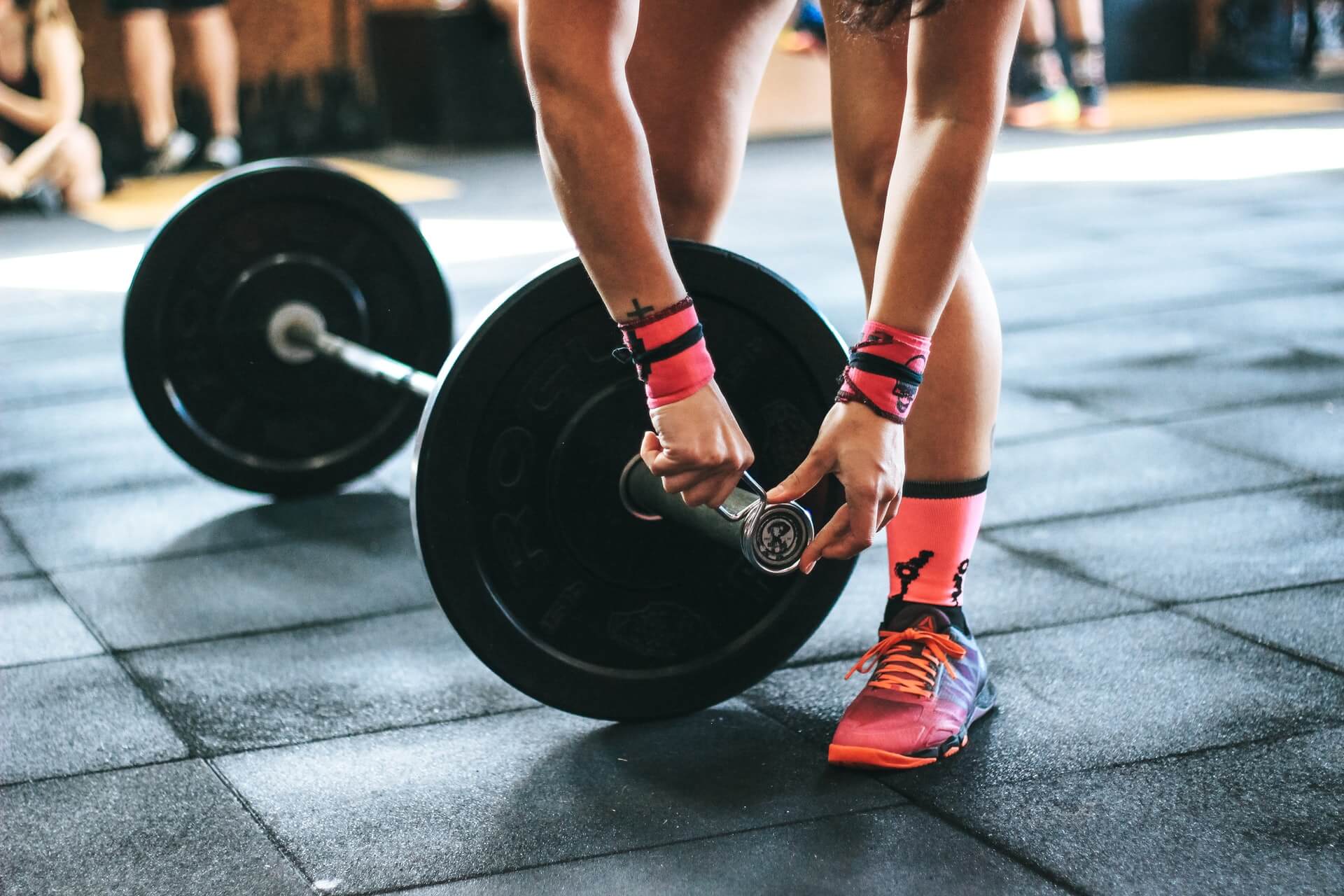Welcome to our exploration of female strength training! In this post, we delve into the realm of strength training for women, highlighting its unique considerations and dispelling common misconceptions. While the principles of strength training remain consistent across genders, there are nuanced differences in approach and emphasis for women. Join us as we unravel the intricacies of female strength training, empowering women to harness the transformative benefits of strength training tailored to their specific needs and goals. Whether you’re a seasoned athlete or new to the world of fitness, discover how strength training can redefine your physical capabilities and enhance your overall well-being.
The aerobic exercise myth
Ever noticed that the weights room is stereotypically the “male” section, while the cardio machine/aerobics room is stereotypically the “female” section? When asked about this phenomenon, women typically respond with, “I’ve heard I need to do lots of cardio to lose weight,” and “I don’t want to get bulky.”
Initially, most people will experience small to moderate weight loss with aerobic exercise. However, over time, their bodies adapt and become more efficient, resulting in fewer calories burnt. So, why are distance runners so skinny? Lots of aerobic exercise stimulates the production of stress hormones (cortisol), which are catabolic in nature, meaning they promote tissue breakdown. Your body perceives the experience of a stressful situation, and these stress hormones oppose the development of muscle mass. With chronic exposure, they can break down muscle tissue, as well as other tissues, including bone. Stress hormones also signal your body to hold onto existing fat stores in case you need to run for hours to escape danger. This triggers a sympathetic (fight-or-flight) state, where blood is shunted away from internal organs to peripheral muscles in preparation for action. Chronic exposure to stress hormones compromises tissue building and repair, digestion, hormone production, and other essential functions. Disorders likely to develop include diabetes, osteoporosis, infertility, menstrual problems, digestive disorders, heart disorders, and impaired immune function.
Intense short bouts of exercise or interval training elevate metabolism more than steady-state continuous exercise. Aerobic exercise stimulates metabolism for up to 12 hours post-exercise, while high-intensity resistance exercise can stimulate metabolism for up to 48 hours, and in some cases, up to 72 hours. Sprinters often have the best bodies in the fitness industry, with ripped muscles and minimal body fat. In contrast, a typical long-distance runner will have a higher percentage of body fat than a sprinter.
For long-term benefits, combine steady-state and high-intensity interval training. Too much high-intensity anaerobic exercise over time can be as exhausting and detrimental to health as too much aerobic exercise. Alternate aerobic with resistance training sessions to keep your body guessing and prevent adaptation. Use compound, free weight exercises that recruit stabilizer muscles, such as squats or lunges.
Exercise machines versus good old-fashioned free weight training
Machines offer guided resistance and often require a seated position, which eliminates the need to recruit the stabilizer core muscles or postural mechanisms of the body. People who exercise on machines may subsequently get away with not engaging their stabilizers and inner core muscles, including the transversus abdominis (TVA), and as a result, they may develop faulty muscle recruitment patterns. Free weight or bodyweight exercises, performed with good technique are gold in the gym, which when chosen correctly will condition the entire body – no need for 100 crunches ever again.
Will I develop bulky muscles?
Personally, I used to be very cautious about weight training, given my naturally mesomorphic (muscular) body type. While weight training undoubtedly enhances muscle tone, achieving the aesthetics of Arnold Schwarzenegger is a distant reality for most individuals. Females inherently have much lower levels of testosterone, which is a key hormone for muscle building. Additionally, estrogen suppresses significant increases in muscle mass. Female bodybuilders often dedicate 3 to 5 hours a day to specific hypertrophy programs, which typically involve 5 to 10 sets per exercise. Despite these efforts, many female bodybuilders struggle to gain large amounts of muscle naturally, leading some to resort to anabolic steroids for assistance. To minimize the risk of developing bulkiness, individuals can either reduce the intensity to less than 65% (more than 14 reps) or increase the intensity to greater than 90% (less than 5 reps), particularly for advanced athletes. It’s also advisable to decrease the number of sets per exercise and limit the number of exercises per targeted body part. Incorporating cardiovascular exercise at the beginning or end of a workout session can also counteract excessive muscle growth.

Sore neck and frequent headaches
Your head comprises a significant 8% of your total body weight, and in today’s society, we have shifted toward a forward-head posture culture. This places immense strain on the muscles of the neck extensors. Compared to males, females generally have less mass in their neck extensors, and from puberty onward, their posture in the neck and shoulder girdle often becomes compromised, exhibiting characteristics such as forward head and rounded shoulders. Interestingly, these postural changes may coincide with emotional challenges experienced during adolescence as the body undergoes significant transformations. The resulting tension in the neck muscles, particularly the sub-occipital, levator scapulae, and upper trapezius muscles, can contribute to the development of tension headaches and migraines. Therefore, a well-designed exercise program should aim to address these postural challenges, realigning the body’s joints and alleviating pain, thereby preventing the appearance of a “turtle-head” posture.
For women contemplating breast implants, it’s crucial to assess the position of the shoulder girdle before making any decisions. Rounded shoulders can tighten the fascia of the pectoral muscles, potentially leading to breast drooping. Therefore, correcting posture should be prioritized. If deemed necessary afterward, one can then consider other options.
Lower back pain and high-heels
A multitude of factors contribute to lower back pain, yet it’s surprising how often high heels are overlooked in this context. As heel height increases, the body must compensate by either hyperextending the knees, increasing lumbar lordosis, or bending the knees and flattening the lower back. This adjustment can lead to adaptive shortening of the calf muscles, pulling the knees into hyperextension and increasing the curvature of the lower back. Personally, I enjoy wearing heels occasionally, especially when dancing, although my friends might not consider them particularly “high.” However, I can definitely feel their impact after just an hour of wearing them! If you find yourself wearing high heels daily for work and experiencing persistent lower back discomfort, it’s worth considering whether they are truly necessary for your daily routine.
Knee Joint Considerations
Collectively speaking, inherent in women’s structural anatomy is a greater ‘Q’ angle than men, or angle from our outer hip bone to knee. This greater ‘Q’ angle has been associated with higher prevalence of non-contact anterior cruciate ligament (ACL) injuries. The greater ‘Q’ angle, coupled with a wider pelvis can lead to medial rotational instability of the leg, which occurs more frequently in women than in men. A wider pelvis can also lead to iliotibial band (ITB) tightness, femoral anteversion (inward rotation of the upper leg bone), foot pronation and retropatellar dysfunction (lateral subluxation and chronic patella tracking dysfunction). The best cure is a well designed functional exercise program, based on an individual assessment, with attention given to core, hip, knee and ankle stabilisers.
Flexibility
Women have greater joint laxity or flexibility, which is associated with dysfunctions of the shoulder, lower back, hip, knee, ankle and foot. Check with a qualified professional to determine if you are hypermobile and whether Yoga is or is not a good idea for you!

Monthlies
As you may or may not know (speaking to both men and women), women’s hormones fluctuate in a cycle each month in the preparation for that possible chance of conceiving a child. Pre-menstrual symptoms may range from bloating, transverses abdominis inhibition (core stabiliser), weight gain / water retention, breast tenderness, back pain, mood swings, irritability, bowel irregularity and fatigue. Lucky hey?! A healthy diet and lifestyle to reduce overall stress can reduce unwanted symptoms, however take note to be gentle with yourself at this time since the body is not primed for heavy or intense exercise. Ligaments are more lax, maximal strength is lower and the body stabilisers are not working as well as usual.
A note about the core..
An important muscle to restore and maintain function is the transversus abdominis (TVA). The TVA, through its connection to the thoracolumbar (mid to lower back) fascia, has a relationship with the diaphragm, the deep stabilisers of the spine and the pelvic floor, as well as the hamstrings and the peroneal muscles of the lower leg and foot. By improving TVA function, the exerciser increases stability of the spine, pelvis and legs. TVA function is frequently dysfunctional after childbearing, caesarean section or hysterectomy. A TVA can be inhibited by inflammation and pain, as associated with food intolerances and allergies, digestive problems and parasite or fungal infections.
For the tummy?
We see people over-doing the crunch exercise (where the trunk only moves through a limited 30 degree range of motion and fails to extend past a neutral position), with little results and maybe even developing back pain. Also, too much trunk flexion and not enough trunk and hip extension exercises commonly results in poor posture and impaired breathing patterns (depressed sternum and first rib angle, shortened neck flexors, tight upper abdominals). So what can you do? Firstly, an assessment by your Exercise Professional is always recommended before prescribing any movement. First you’ll want your TVA and lower abdominals functional and thereafter more functional exercises to incorporate the rectus abdominis and obliques.
In conclusion, female strength training is a dynamic and empowering journey that encompasses both similarities and unique considerations compared to male counterparts. While the fundamental principles of strength training apply universally, recognizing and addressing the specific needs and goals of women is essential for optimizing results and ensuring long-term success. By embracing tailored training programs, cultivating a supportive community, and challenging preconceived notions, women can unlock their full potential and redefine their strength both inside and outside the gym. Let us continue to champion diversity and inclusivity in the realm of strength training, empowering women to thrive and flourish in their fitness endeavors.
Visit my online coaching for practical exercise programs.
References
Burgomaster, K.A., Heigenhauser, G.J.F. & Gibala, M.J. (2006). Effect of short-term sprint interval training on human skeletal muscle carbohydrate metabolism during exercise and time-trial performance. J App Physiol, 100: 2041-7.
Burgomaster, K.A., Hughes, S.C., Heigenhauser, G.J.F., Bradwell, S.N. & Gilbala, M.J. (2005). Six sessions of sprint interval training increases oxidative potential and cycle endurance capacity in humans. J Appl Physiol, 98: 1985-1990.
Diane Lee Treatment of Pelvic Instability (445-459) Movement, Stability & Low Back Pain The essential role of the pelvis Ed. Andry Vleeming et.al. Churchill Livingstone 1997
Paul Chek, Equal But Not The Same (Correspondence Course) C.H.E.K Institute, 1998.
Tremblay, A., Ysohioka, M., Doucet, E., St-Pierre, A., Almeras, N., Richard, D., Labrie, A., Depres, J.P. & Bouchard, C. (2001). Impact of high intensity exercise on energy expenditure, lipid oxidation and body fatness. Int J Obes RElat Metab Disord, 25: 332-339.
